About Tanihata’s Kumiko
Kumiko is a delicate and sophisticated technique of assembling wooden pieces without the use of nails. Thinly slit wooden pieces are grooved, punched and mortised, and then fitted individually using a plane, saw, chisel and other tools to make fine adjustments.
The technique was developed in Japan in the Asuka Era (600-700 AD), and has since been refined and passed down through generations of craftsmen who are passionate about the tradition of Kumiko.
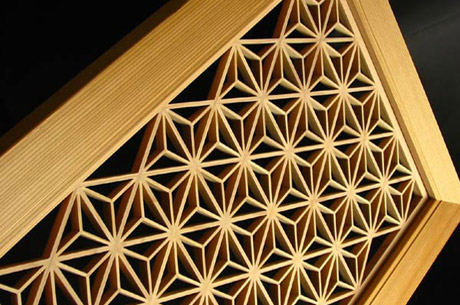
History
Buddhism was introduced from Baekje about 1,400 years ago, along with the artisans, tools, and techniques necessary for temple construction. Prince Shotoku is said to have constructed temples in 46 locations around the country, and even today he is revered nationwide as the “god of artisans.” The technique that Kumiko is based on is said to have started around that time, and it has slowly transformed through the delicate sensibility of the Japanese people to become what it is today.
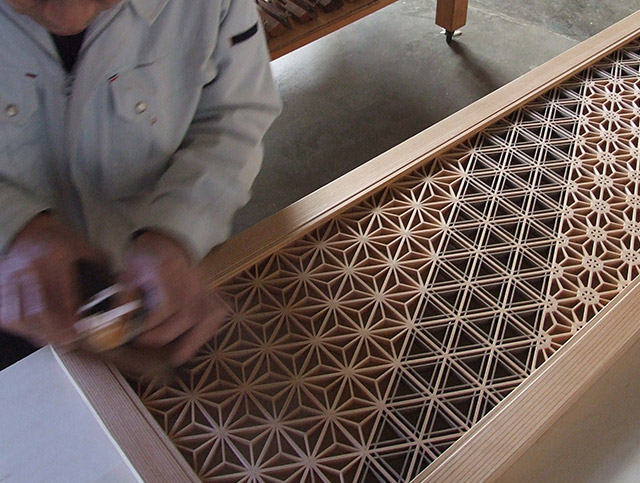
To distinguish Kumiko beauty
If Kumiko is finished in suboptimal conditions(①~⑤), the texture of the product will be damaged, and the strength, durability, and safety of the product will be impacted. Whether or not Kumiko artisans carefully finish each product to the end, and their attitude towards their work is very important.
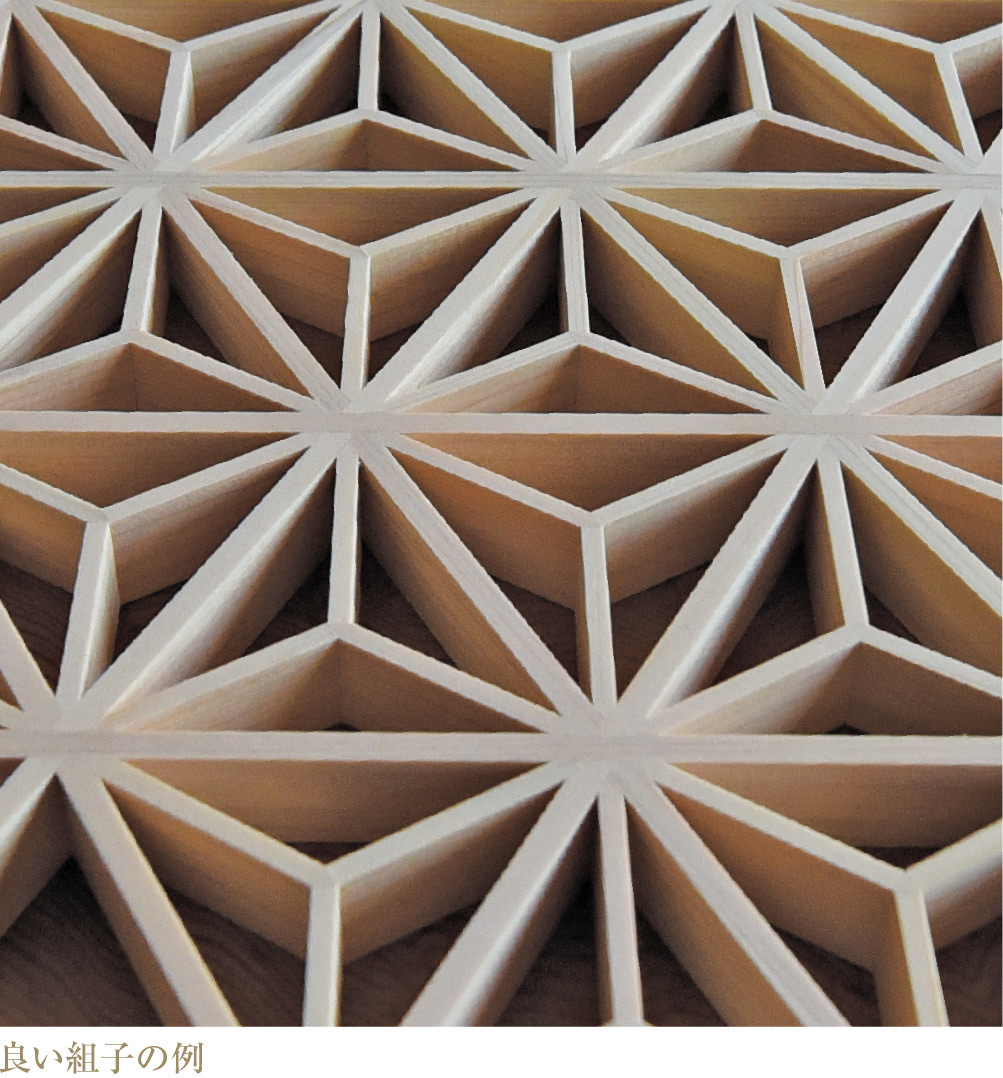
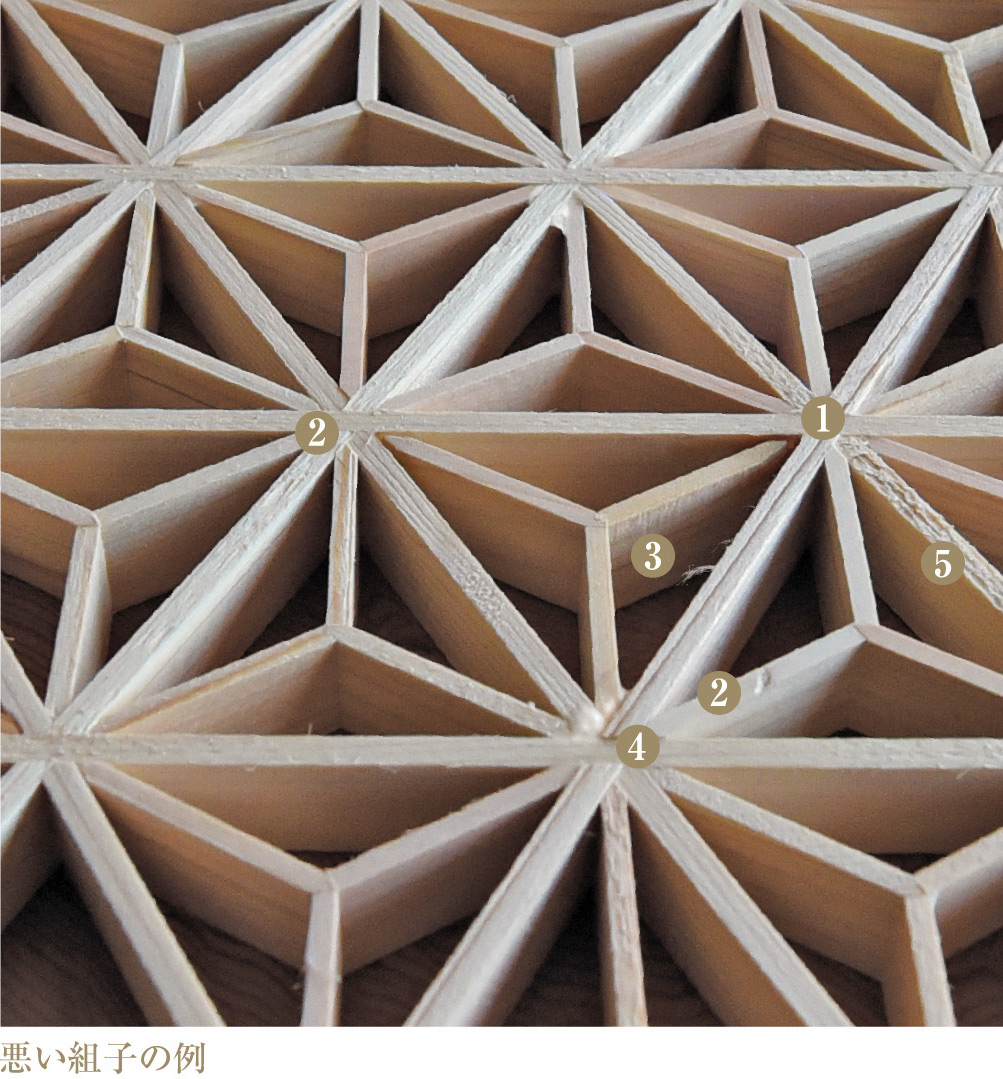
1 Gaps
In case of applying hemp leaf pattern all over a 1000mm×2000mm panel, there are 3496 parts, and they need to be assembled without gaps. Difference of craftsman’s skill appears in the number of gaps.
2 Unevenness and scars
If there is not enough finishing process on the surface, it causes unevenness and scars to affect finishes.
3 Hangnails
Because of natural materials, wood fibers sometimes jump out on the finishing process.
4 Glue protruding
Small amount of glue is used to assemble woods for finishing.Too much glue protrudes on the Kumiko surface and harms texture.
5 Interlocked grain
In this part, the direction of wood fiber is inverted.It loses luster and becomes rough.
To take a measure of wood materials for Kumiko
Kumiko and the surrounding frame are made with wood from fine-grained conifers.
It is used because
・it has good workability, and doesn’t warp or twist even when split into thin pieces.
・it shines after being planed, and the wood surface is beautiful even without being painted.
Fine-grained conifers are generally suitable materials for the delicate craftsmanship of Kumiko.
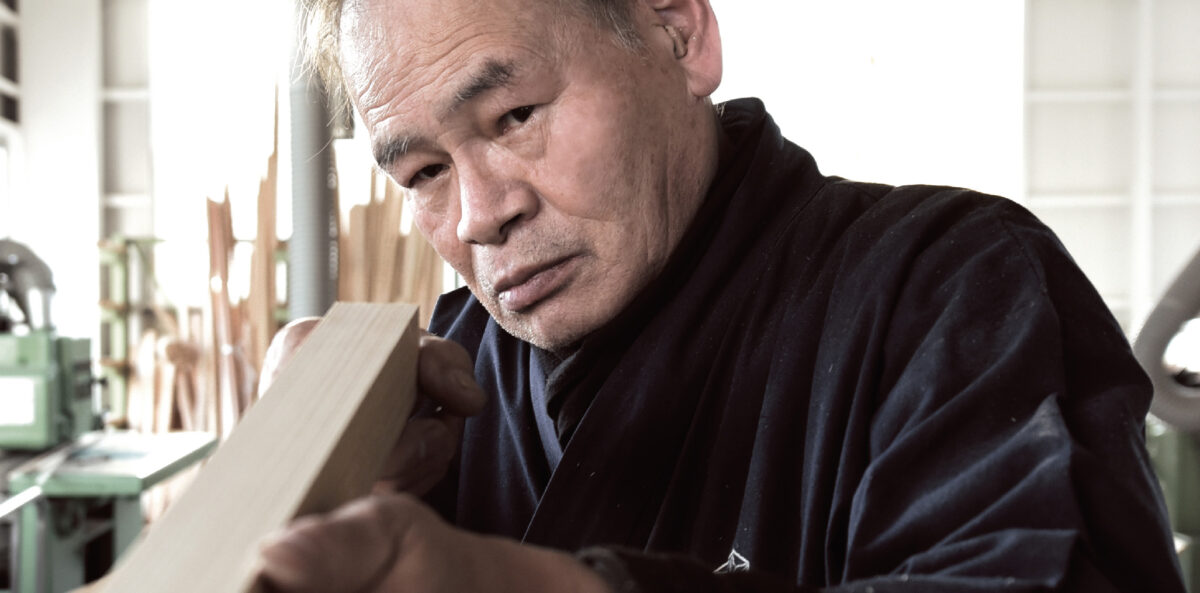
For Kumiko and its frame materials, we remove woods like the following.
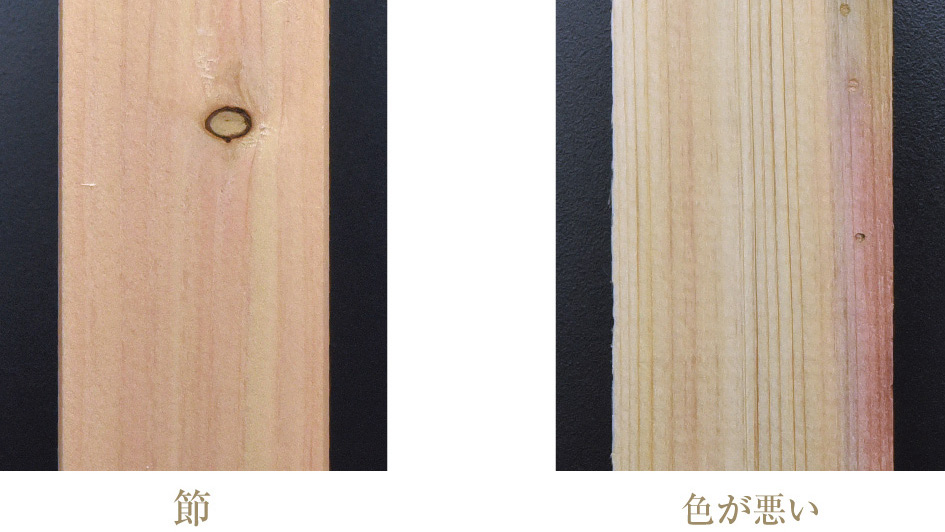
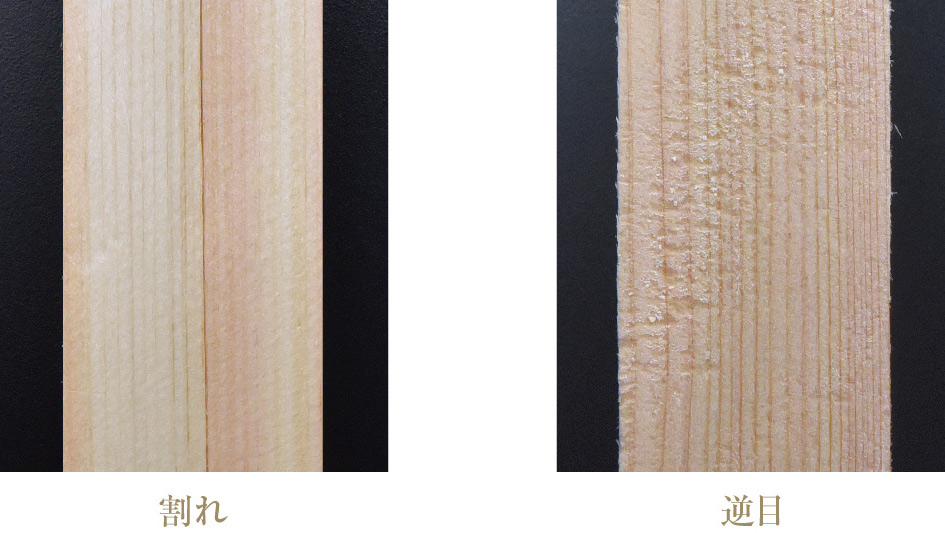
Kumiko products, which are manufactured using delicate techniques, are greatly affected by wood.
Materials must be carefully selected and manufactured to avoid warping, twisting, or gaps after installation.
※Excluded woods are used in parts where they will not cause problems.
Wood waste and sawdust are fully consumed as fuels for heaters of workplace in the winter.
※Cypress contains a large amount of oils which may seep out from the surface due to hot weather or the location where it is placed.
As this is a natural feature of cypress, such wood is not excluded during Tanihata’s selection process.
5 features of Tanihata
Japanese Kumiko to be worldwide.
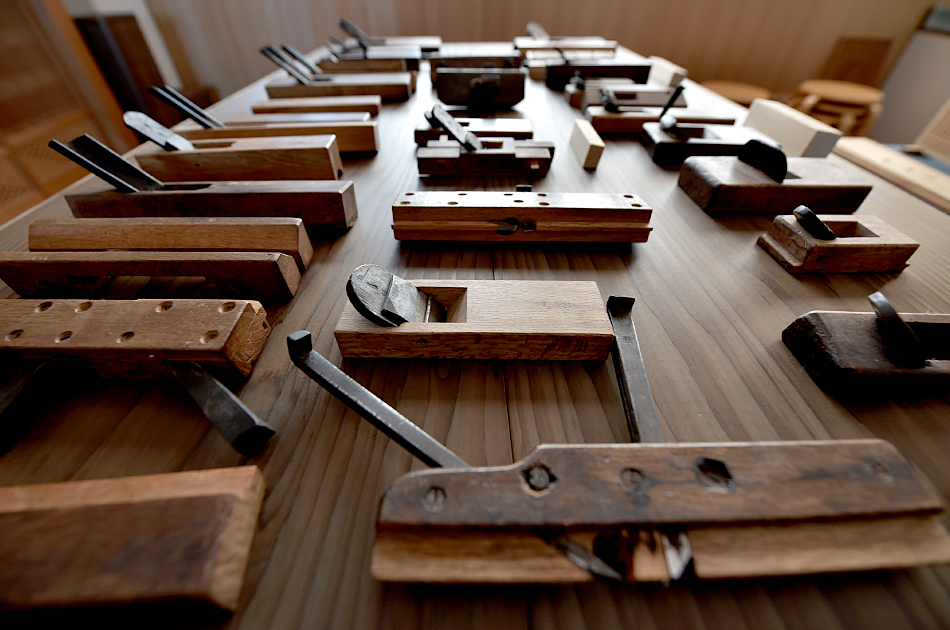

In Toyama Prefecture, where Tanihata was established and based, people are hard-eyed and particular about houses.
Improved by customers, Prime Minister Award at the exhibition of National Interior Association in 1977 is a part of our award history.
We have specialized Kumiko production for more than 60 years and keep evolving our traditional hand works with the latest digital skills.


Our advantage is to have 20 Kumiko artisans. As they get involved with production as a team, we can deal with large proposals like hotels. Our factory amounting to 1,200 square meters is fully equipped with more than 50 woodworking machines including 7 NC radial saws dedicated to Kumiko.
With artisans’ skills using planes and chisels, dynamic and delicate quality has been implemented.

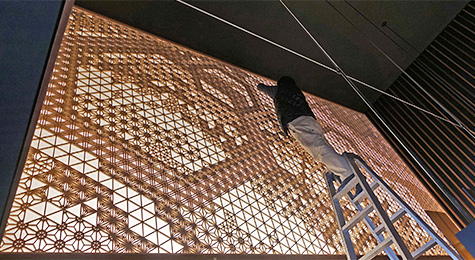



All Tanihata products are made to order. We put effort into not only traditional but also original Kumiko with excellent design for customers.
We have professional Kumiko designers in and out of the company to cooperate with architects and designers. Considering concepts, necessary functions, character of the space and lighting effect, we will provide original designed Kumiko.

In 2006, we got the best award from 100 selected companies with IT management. From 2000, dealing with e-commerce, almost all order is from our website today. Additionally, we have taken the lead in promoting digitalization at all process.
Our original system has been constructed to deal with online meetings and downloading and sharing many kinds of drawing data like CAD, DXF, PDF and CG perspectives. Digital framework is prepared to do business with worldwide customers.
We have awarded “National SME Cloud Practice Award” in 2021.


“Tanihata takes Japanese woods like cedar and cypress as main material. Our standard is non-coating in order to make full of texture, color and scent of woods.”
An auxiliary adhesive is limited to meet safety standards to avoid pollution.
“To measure products’ radiation dosimetry, formaldehyde and strength, examinations are carried out at public institutes.”
We use 100% green energy and push environment-minded manufacturing toward sustainable society.

